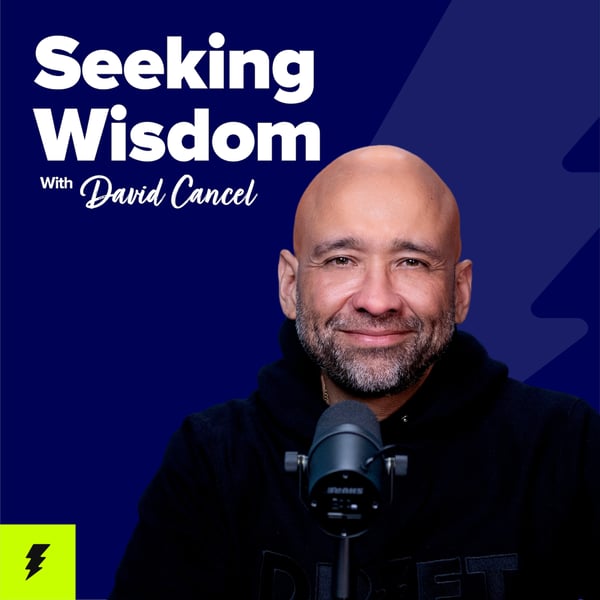#Build 11: Julia Austin on the Making of a Great PM – Lessons from Harvard Business School, Digital Ocean, VMWare & Akamai
Seeking Wisdom with David Cancel
Molly Sloan
5 • 610 Ratings
🗓️ 30 November 2018
⏱️ 40 minutes
🧾️ Download transcript
Summary
Transcript
Click on a timestamp to play from that location
| 0:00.0 | Welcome to Bill. Today I have an incredible guest that I'm so excited to have here. |
| 0:10.4 | She's a mentor and advisor here at Drift and a personal inspiration. This is Julia Austin. |
| 0:16.2 | She is these days a senior lecture at Harvard Business School. She's an advisor or board member on what feels like every startup in Boston, including Drift, Wistia, ZapRX, Help Scout, and many others, and was previously the CTO at DigitalOcean, a VP at VMware, VP of Engineering, Akamai, and I lost count of all the other things that you had on your career. So welcome to Seeking Wisdom. |
| 0:36.2 | Thank you. It's good to be here. Yeah. Excited. We can finally make this happen. So I have two big topics I want to get through today. First, what is a good PM? What makes a good PM? How do you become a good PM? And then second, how do you build a career in products? because you know you're teaching students how to be PMs right now. |
| 0:54.5 | But first I want to understand how did you go and why did you go |
| 1:00.2 | from this career in engineering to teaching product? Yeah, sure. Great question. So obviously |
| 1:04.6 | leading engineering teams and working with engineering teams, you're always interacting with product |
| 1:09.0 | people all the time. time. And I would say |
| 1:11.1 | early in my career, a lot of my roles that were not engineering, like release manager at Akamai |
| 1:15.3 | in the early days, were really product type roles. Figuring out requirements, talking to customers |
| 1:21.4 | a lot and understanding their needs, trying to translate technical things back to the business, |
| 1:25.9 | as far as what it took to get things done, was always in my blood, so it's always something I've done. When I was CTO at DigitalOOcean, I was running engineering product and marketing, by the way, which I think is actually something that's kind of important and cool and something I always wanted to do because I always felt like marketing was an integral part of what we were doing with product. Everything from knowing when you're shipping things to how it's being positioned and why you're positioning it that way. And so having marketing under product or with product and engineering in the same room every day actually worked quite well. Was that because your customer was so technical? Or do you think that model would work elsewhere too? Yeah, I know. I think the model would work elsewhere as well. I mean, at the end of the day, if an organization is built well, it doesn't matter who reports to whom. I have a very strong philosophy about that and moving people around just to make things work better isn't always the answer. But in this particular case, and I think it would work anywhere. I don't think it's just in a very technical product. Having marketing or product marketers very close to product. |
| 2:19.0 | Again, you build empathy, just like we build empathy with our users or our target customers, |
| 2:23.7 | building empathy with the engineering and product team and understanding what's coming, |
| 2:27.9 | why, what sort of the root is, really can make all the difference. |
| 2:31.1 | Right. So then how did you get that role as a teacher? |
| 2:33.9 | So my entire career, as you said, it's sort of long, but it's always been one of those right time, right place kind of things. And so at HBS, I had just left VMware. I was at VMware for eight years, had an incredible run there, super fun, got to see the company grow from 800 people to 15,000 people, and about 800 million in revenue to 6 billion in |
| 2:52.5 | revenue. It was a pretty nutty ride. It was great. But I really wanted to get back to early stage |
| 2:57.7 | companies again. So I was doing that for a few years here in Boston and had a great network. |
| 3:03.9 | And somebody asked me if I would do a guest lecture spot at HBS and it was for the product |
| 3:08.1 | class that I teach now. |
| 3:09.4 | Right. |
... |
Please login to see the full transcript.
Disclaimer: The podcast and artwork embedded on this page are from Molly Sloan, and are the property of its owner and not affiliated with or endorsed by Tapesearch.
Generated transcripts are the property of Molly Sloan and are distributed freely under the Fair Use doctrine. Transcripts generated by Tapesearch are not guaranteed to be accurate.
Copyright © Tapesearch 2025.

